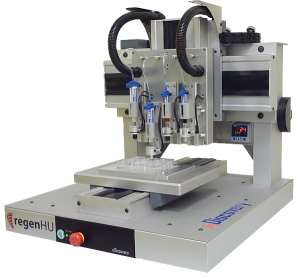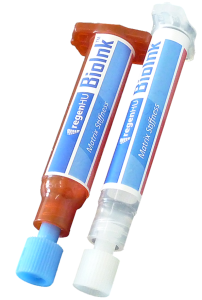Lately there has been a lot of talk — and writing — about breakthroughs in 3D bioprinting. I know, I have covered a lot of it myself. The thing is, while complex 3D printed organs are still many years away, there already are companies that have commercially released both 3D bioprintiners and bioink products. One of these is Swiss based RegenHU (which stands for Regeneration HUman) and its product line up is quite impressive.

What is perhaps even more interesting is that RegenHU also commercializes it own 3D bioprinting “consumables”. One is called simply “Bioink” and is a chemically-defined hydrogel to support growth of different cell types. The other, Osteoink, is a ready-to-use calcium phosphate paste for structural engineering to be used in the RegenHU BioFactory and 3DDiscovery systems.
RegenHU’s potentially biggest product, OsteoFLUX, is not yet on the market but it could be soon. It sits inside what looks like normal medicine packaging and resembles a small, white sugar cube. It might just become the first synthetic biological implant to hit the market.
“It is a synthetic bone grafting material used to augment the jaw bone volume in order to provide enough mechanical stability to support a dental implant,” Marc explained to me. Used in oral surgery, OsteoFLUX has a unique bioarchitecture presenting a structurally stable, highly biocompatible scaffold that facilitates bone formation.
To market it, RegenHU, which is part of the CPA Group (an automation and industrial specialist with about 150 employees) created the spin-off VIVOS Dental and will supply it with its 3D printers while leaving the new company free to focus on developing further bioprinting applications.
While this is potentially a huge leap in organ bioprinting it also clearly indicates how far away we are from being able to really create full complex artificial organs. Many new materials will need to be developed and many technologies will need to be perfected, not to mention the plethora of legal issues that will arise. Neverthless the path to follow is clear, and it is 3D dimensional, down to the bone.





